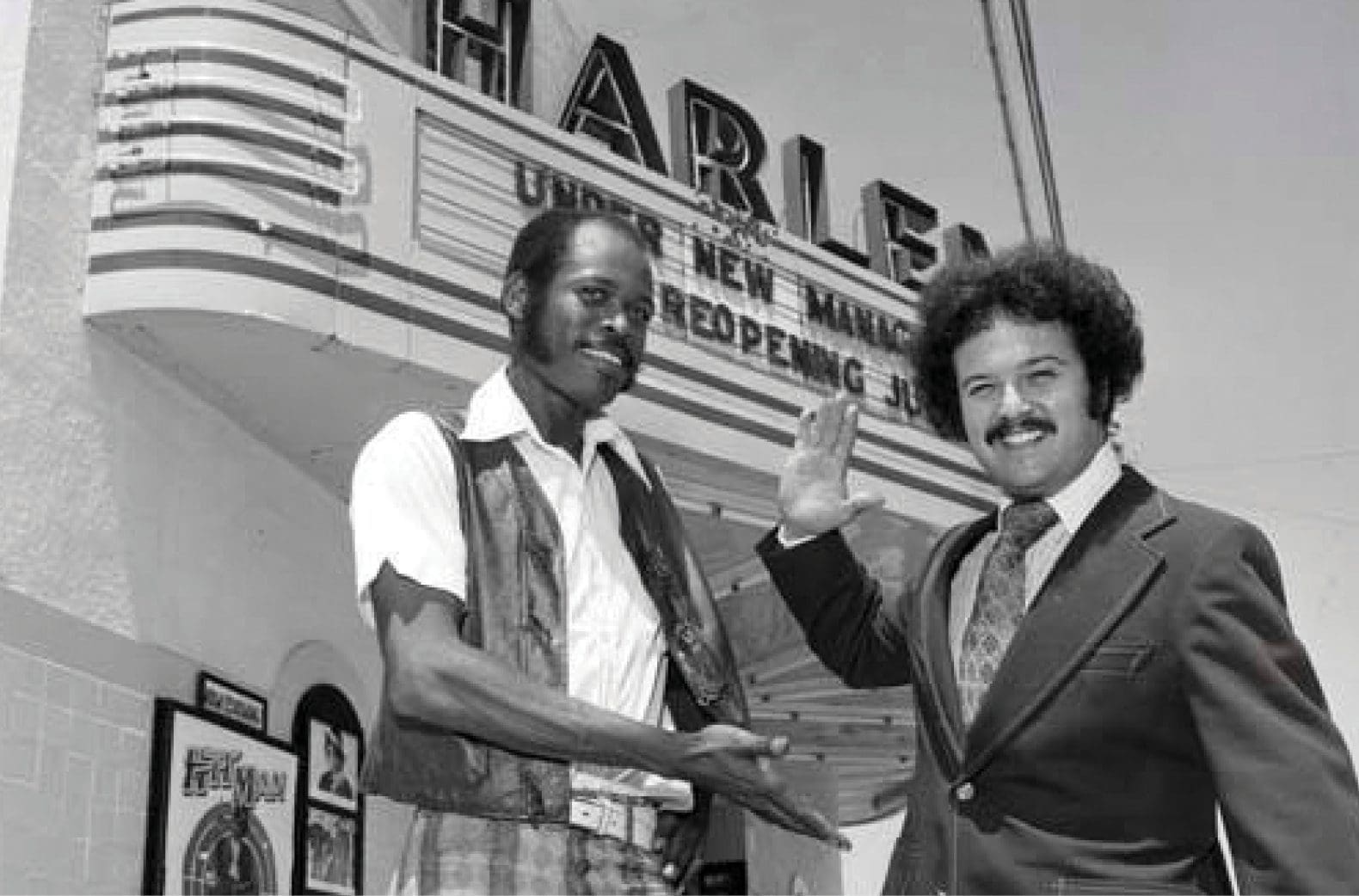Harlem Theater

A Jewel of East Austin’s Past
Words by Montinique Monroe Photos courtesy Austin History Center
A vacant lot sits at the corner of East 12th and Salina streets, leaving new residents with no trace of what once existed on the plot of land. However, East Austin natives vividly remember the beloved black movie theater that thrived there 45 years prior.
Founded amidst the segregation in 1935, Harlem Theater served black moviegoers in a way other Austin movie theaters would not. Longtime resident Ada Harden, 82, remembers when black people were forced to enter the white-owned Ritz Theater through a fire escape and watch movies from the balcony. Back then, she was only a child. “Even at that time, I realized that it was just unfair,” Harden says. Resident Brenda Mims Malik, 67, had a similar experience at a different white-owned theater. “When we went downtown to the Paramount and were told we had to go upstairs, I thought that was so stupid, but I must say I enjoyed throwing things over the balcony,” Malik recalls. “I knew it was wrong and that it was based on race, and so that was my only retaliation.”
Harlem owners George and Sadie Jones created a vibrant, comfortable, and family-oriented environment which allowed black people to watch movies in the same way their white counterparts could. It was a movie theater created for black people, by black people and was extraordinary for being one of seven theaters owned and operated by blacks in the United States during its time. Although big star movies took a year or more to reach the Harlem, patrons were able to enjoy movies such as Killer Diller, She’s Too Mean for Me, Up Jumps the Devil and Imitation of Life. Prestigious movies often never made it to Harlem; as a result, patrons had the option to see the same movie multiple times. Harlem Theater was the city’s most visible and stable black business, offering the community much more than a place to just watch movies.
For Malik, Harlem was her babysitter. Her father was a school counselor, and her mother was a teacher. The theater kept her occupied while her parents attended work meetings. “When I was going to the Harlem, it was a total street experience for me,” Malik grins. “It had a unifying effect for the community as well. It brought everybody together.” There is no doubt Harlem fostered a sense of community. Live entertainment and magic shows often took place outside of regular film programming. Local performers would compete in talent shows for prizes donated by other local black businesses. The confectionery offerings were popular, especially their 15 cent chili burgers. It was so popular that customers would stop by the theater to grab a chili burger as takeout.
Sadie Jones sold the theater to its first white owner Sam Lucchese after her husband died in 1951. Lucchese maintained the theater under the same policies as the Jones’s until his tragic death in December 1960. Thereafter, Harlem Theater saw many owners before it burned down December 30, 1973. Although there are many speculations as to what caused the fire at Harlem that day, the actual cause remains unknown. Nevertheless, Harlem Theater will always be remembered as a jewel of East Austin’s past.
Native Knowledge
- Harlem’s auditorium was divided in three sections of red velvet seats separated by two aisles. Every other row had a double seat on the end for couples. There was a stage in front of the movie screen where many talent auditions and live performances would take place.
- In addition to the famous chili burger, Harlem Theater’s confectionery sold hot dogs, popcorn, candy, ice cream, pickles, and drinks. A popular combo was a chili burger and a soda, which only cost patrons 25 cents. The theater’s profits did not come from admissions but from concessions.
- Harlem movie prices were 15 cents for adults and 5 cents for children age 11 and under.
- All positions at Harlem were filled with black employees with the exception of the projectionist. This is attributed to the fact that the local motion picture machine operator agency was not integrated until the 1960s.
Contact:
(512) 505-8738
sixsquare.org
info@sixsquare.org










